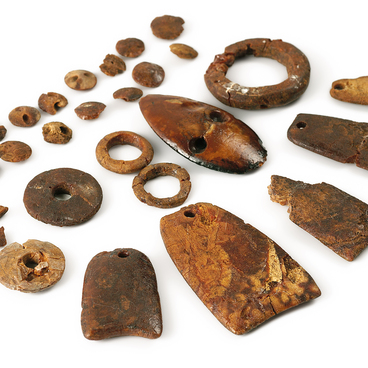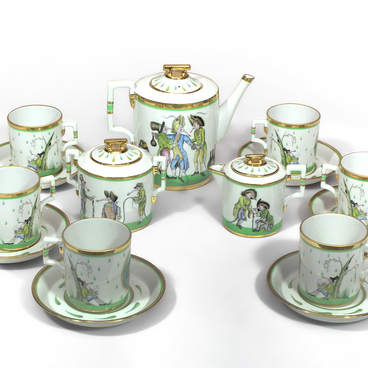The statuette “Lady at the Piano” from the museum’s collection is an example of “dentelle ware”. The method of its production was developed in Dresden at the beginning of the 18th century. It was then that the mass production of porcelain figurines began. Craftsmen created figurines of nobles, ballerinas, dancers, actresses and musicians.
Lush lace ruffles, which became popular as elements of women’s clothing in the 18th and 19th centuries, were recreated on porcelain dresses. To do this, real lace was dipped in a specially prepared porcelain mass. After that, clothes were molded from such blanks directly on the figurines. The sculptures were then placed in a kiln where, at high temperatures, the textile lace was burned off and only the porcelain lace was retained.
This composition depicts a female figure in a white wig playing music at the piano. The lady is wearing an 18th century lace white dress with open shoulders, a black corset. Black shoe toes show from beneath the puffy hem of the dress. The artist placed the lady on a white armchair with a gilded backrest.
Under the three-legged musical instrument decorated with gilded painting, the artist placed small buds of one pink and one yellow roses with open petals. The composition is arranged on a relief stand with gilding details. On the front side, under the right leg of the piano, there is a reddish-colored brand mark with a crown and a pair of crossed swords. Their grips are Latin capital letters M and V, indicating the manufacturer, the German firm Martha Budich.
This company appeared in Dresden in 1951. The brand mark it used was questioned by the Meissen manufactory, which used the symbol of crossed swords. Prior to that, a similar mark was also used by the porcelain company R.& E. Pech, whose crossed swords also had Latin letters as handles. By 1951, this company had ceased to exist, so only Martha Budich was sued.
In 1963, a German court
announced a decision that obliged the young Dresden-based company to change its
brand mark. As a result, the Martha Budich business closed in 1977. This
historical fact made it possible to date the statuette to the period between
1951 and 1963.


